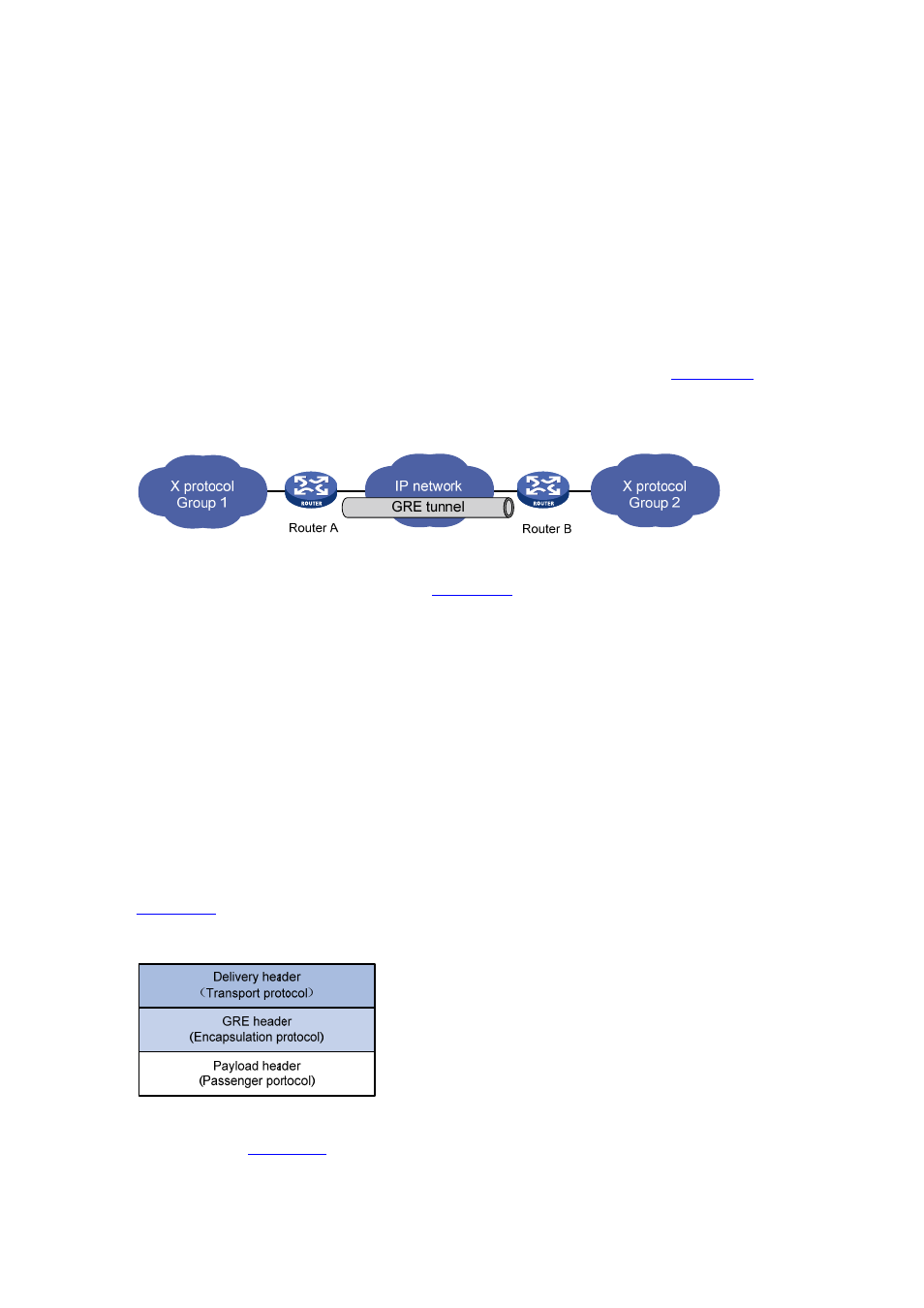Gre tunnel, Encapsulation process, Format of an encapsulated packet – H3C Technologies H3C S7500E Series Switches User Manual
Page 164

15-7
5) If the passenger protocol is IPv4 or IPv6, the packet is sent to the tunnel processing module for
decapsulation.
6) The decapsulated packet is sent to the corresponding protocol module for the secondary routing
process.
GRE tunnel
Generic Routing Encapsulation (GRE) is a protocol designed for encapsulating and carrying the
packets of one network layer protocol (for example, IP or IPX) over another network layer protocol (for
example, IP). GRE is a tunneling technology and serves as a Layer 3 tunneling protocol.
A GRE tunnel is a virtual point-to-point connection for transferring encapsulated packets. Packets are
encapsulated at one end of the tunnel and decapsulated at the other end.
depicts the
encapsulation and decapsulation processes.
Figure 15-5 X protocol networks interconnected through the GRE tunnel
The following takes the network shown in
as an example to describe how an X protocol
packet traverses the IP network through a GRE tunnel.
Encapsulation process
1) After receiving an X protocol packet through the interface connected to Group 1, Router A submits
it to the X protocol for processing.
2) The X protocol checks the destination address field in the packet header to determine how to
route the packet.
3) If the packet must be tunneled to reach its destination, Router A sends it to the tunnel interface.
4) Upon receipt of the packet, the tunnel interface encapsulates it in a GRE packet. Then, the system
encapsulates the packet in an IP packet and forwards the IP packet based on its destination
address and the routing table.
Format of an encapsulated packet
shows the format of an encapsulated packet.
Figure 15-6 Format of an encapsulated packet
As an example,
shows the format of an X packet encapsulated for transmission over an IP
tunnel.